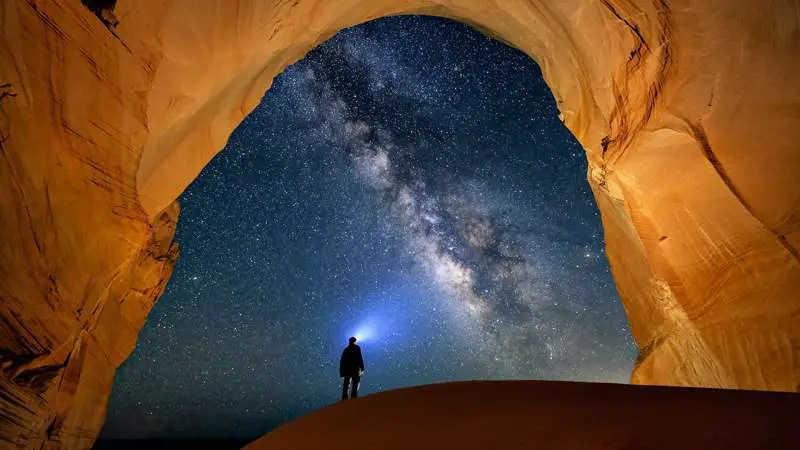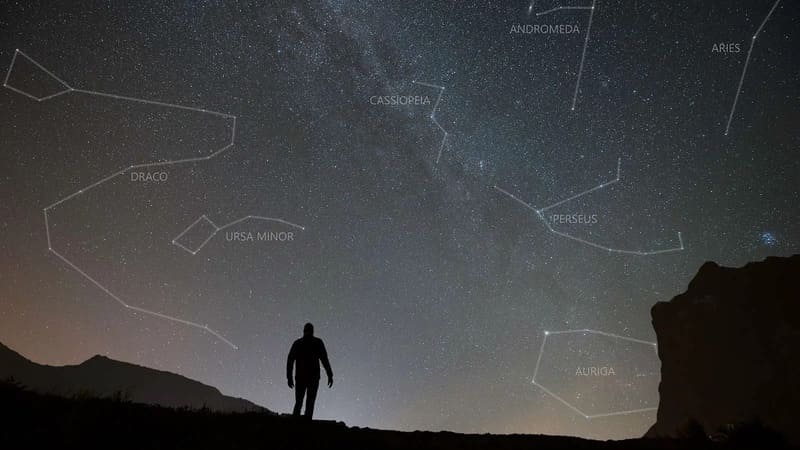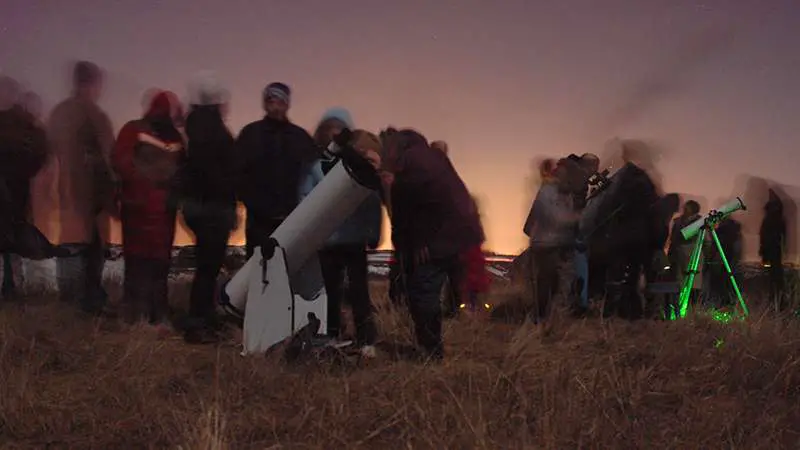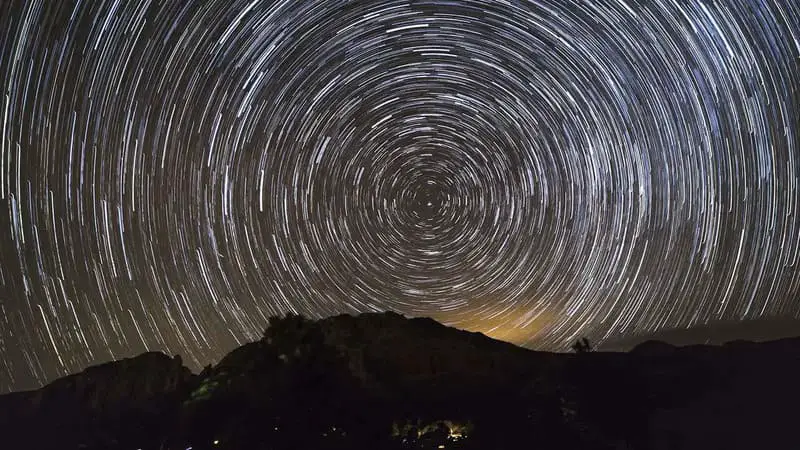When gazing at the night sky, you may wonder, “Is Stargazing a Hobby?” As you’ll soon discover, it is a hobby and an activity enjoyed by a wide variety of people with varying levels of experience.
Yes, stargazing is indeed a hobby that anyone can enjoy, as it combines the beauty of the night sky with educational aspects, offering a relaxing and fulfilling experience. While some hobbyist stargazers and amateur astronomers use simple tools such as their own eyes or binoculars, others invest in high-quality telescopes and contribute significantly to astronomy and space exploration.
As a beginner in stargazing, you can quickly get started by familiarizing yourself with the constellations and star patterns visible from your backyard. Over time, your knowledge and appreciation for this mesmerizing pastime will only grow, making the vast cosmos feel closer than ever before.
In this article, you get
A good overview of what stargazing is and why it’s an excellent hobby
A look back at how star gazing got started
A list of the benefits of stargazing
How to get started in this hobby
Helpful resources
A list of frequently asked questions about stargazing and amateur astronomy
By the end of this article, you’ll have all the info you need to continue your journey of becoming an amateur astronomer and more!
Let’s dive right in.
Recommended For You
Is Stargazing a Hobby?

What Is Stargazing?
Stargazing is a fun and educational astronomy hobby where you observe and enjoy the wonders of the night sky. It’s a great way to relax under the stars and learn about our universe.
You don’t need any special equipment to get started.
You only need your eyes, clear skies, and curiosity. Read my article on when is the best time to see stars.
FREE STARGAZING CHECKLIST
My 5-page Stargazing Checklist will enhance your astronomical observations.
Follow this free checklist to navigate the night sky with confidence, clarity, and a sense of preparedness for a rewarding stargazing experience.

With some knowledge about the night sky, you can identify different celestial objects and make connections between them. When you stargaze, you might see twinkling stars, a constellation, planets, and even the occasional shooting star. Plus, it’s a fantastic way to share quality time with friends and family.
To make the most of your stargazing experience, try these tips:
- Find a stargazing spot away from city lights for a clear dark sky.
- Let your eyes adjust to the darkness for about 20 minutes to improve your night vision.
- Use free stargazing apps or star charts to help identify things like the north star or the big dipper.
- Learn a few constellations and use them as a guide to finding other celestial objects.
The History of Stargazing
Imagine being an ancient human, looking at the night sky filled with countless stars.
Stargazing has been a part of human history for thousands of years. People from various cultures observed the stars to navigate, track time, and make sense of their world. They developed myths and legends based on patterns and shapes they noticed among the stars, later known as constellations.
As stargazing evolved, so did the tools and methods to observe the sky. Early instruments, like astrolabes and sextants, helped people measure the positions of celestial bodies.
With the invention of the telescope in the 17th century, you could see more distant objects, like planets and moons, which marked the beginning of modern astronomy.
Today, stargazing is enjoyed by both professional astronomers and people like us as a fun and educational hobby.
So, the next time you gaze at the stars, remember that you’re participating in an age-old pastime that has helped humans explore and understand our fascinating universe.
Benefits of Stargazing as a Hobby

Mental Health
Stargazing can do wonders for your mental health. It’s a form of mindful meditation that helps you relax, clear your mind, and reduce stress. You can quickly become absorbed in observing the stunning night sky, and your worries will fade. So much so, that you may want to plan ahead to ensure you’re safe when stargazing.
Connection to Nature
When you practice stargazing, you uniquely connect with nature. You’ll appreciate the beauty and vastness of the universe while enjoying the calming atmosphere of the outdoors. Getting away from the artificial lights and noise of the city can give you a more profound sense of peace.
Educational Value
Stargazing is not only enjoyable but also educational. It helps you learn about constellations, planets, and celestial events. Observing the sky will teach you about our universe and inspire a lifelong interest in astronomy.
- While stargazing, you might witness a meteor shower or spot a bright comet, adding excitement to your experience and motivating you to learn more about these celestial wonders.
- Picture yourself lying on a soft blanket in a tranquil field, eyes turning toward the sky as you gaze at the stars above. The mesmerizing cosmic dance invites curiosity and compels you to explore further.
- Make stargazing even more fun by pretending you’re on a cosmic safari, searching for elusive celestial animals like the Great Bear (Ursa Major) or the Swan (Cygnus). Remember to bring some star-shaped snacks for the journey!
How to Start Stargazing

Choosing Equipment
To start stargazing, all you need is your own two eyes. But investing in some equipment like binoculars can make it more exciting. Binoculars help you see the sky more comfortably and make it easy to find your way around. As you dive deeper into your hobby, consider getting a telescope for an even better view.
Finding a Good Location
For the best stargazing experience, find a location with less light pollution, like your backyard or a nearby park. Make sure it has a clear night sky. Remember to bring folding chairs or blankets to sit back, relax, and watch the sky. Always take water and snacks to stay hydrated and fuel your stargazing adventure.
Understanding the Night Sky
Before you gaze at the stars, get familiar with the night sky by learning the constellations and names of stars. You can use a star wheel, an easy and fun way to explore. Doing this helps you appreciate the beauty of the night sky and makes your stargazing experience more meaningful. And remember, practice makes perfect, so the more you gaze, the more you’ll understand.
Joining the Stargazing Community

As you embark on your stargazing journey, you’ll find that becoming a part of the stargazing community can significantly enhance your experience. It’s an opportunity to learn from others, share discoveries, and join fun activities like stargazing parties. Let’s dive into how you can connect with fellow stargazers.
Astronomy Clubs
One great way to meet other stargazers is by joining an astronomy club. These clubs offer regular meetings, informative sessions, and group stargazing activities. You’ll be amazed at how much you can learn and gain from fellow hobbyists. To find a local club, check out online resources or ask at your nearest planetarium.
Online Resources
Many online resources can help you connect with other stargazers, learn new tips, and stay updated on exciting celestial events. Websites like this one offer informative articles for amateur astronomers. Remember social media – you can join stargazing groups on platforms like Facebook or Reddit to share your passion and knowledge with others.
Advanced Stargazing Techniques

You’ll want to explore more advanced techniques as you progress in your stargazing hobby. Let’s explore a few methods to enrich your night sky observations.
First, use a star chart or smartphone apps to guide you in the night sky. With these tools in hand, you can learn constellations, find celestial objects, and even follow the changing position of planets. A popular app is Stellarium, which offers a virtual sky view on your phone.
Next, invest in binoculars or a telescope. These instruments can reveal details of celestial objects, like the craters on the Moon or the rings of Saturn, that is difficult to see with the naked eye. Here are a few tips for choosing the right tool:
- Binoculars: Look for a pair with a magnification of 7x to 10x and a large objective lens (at least 50mm) for bright and crisp images.
- Telescope: Consider an easy-to-use, portable Dobsonian telescope or a refracting telescope with a sturdy tripod.
Lastly, challenge yourself to capture the beauty of the night sky through astrophotography. Grab your camera, use a tripod for stability, and play with long exposures to capture stunning images of star trails, constellations, and even the Milky Way.
Remember, practice makes perfect! So, get out there and explore the night sky with these advanced stargazing techniques. Happy observing!
Frequently Asked Questions
Is stargazing a hobby?
Yes, stargazing is a fun and educational hobby that everyone can enjoy. All you need is a clear night sky and a curious mind. You can start with your own eyes to observe stars and constellations.
A pair of binoculars can help you see even more. If you want to get more advanced, you can invest in a telescope, but it’s unnecessary.
Do I need a telescope for stargazing?
No, you don’t need a telescope for stargazing. Without a telescope, you can spot constellations, bright stars, and even some planets like Venus and Mars with your naked eyes.
Use a star map or an app on your phone to guide you in locating and identifying constellations. Look for patterns of stars that form recognizable shapes, such as the Big Dipper or Orion’s Belt.
What can I see in the night sky without a telescope?
You can see a lot in the night sky without a telescope! You can spot constellations, bright stars, and even some planets with just your naked eyes. You can also observe the Moon and its phases, meteor showers, and the occasional comet.
Look for patterns of stars that form recognizable shapes, such as the Big Dipper or Orion’s Belt.
You can also see the Milky Way, which is a band of light that stretches across the sky and is made up of millions of stars.
How can I find constellations?
Finding constellations can be tricky, but you can do a few things to make it easier.
Find a dark location away from city lights, where the stars are more visible. Use a star map or an app on your phone to guide you in locating and identifying constellations. Look for patterns of stars that form recognizable shapes, such as the Big Dipper or Orion’s Belt.
Once you’ve found a constellation, trace its shape with your finger or imagine the lines connecting the stars.
With practice, you’ll become more familiar with the night sky and be able to find constellations more easily.
Can stargazing be an expensive hobby?
Stargazing can be an inexpensive hobby. You can start with just your eyes and work up to more advanced equipment.
Visit astronomy websites, read books, and join local clubs or online communities to learn from fellow stargazers.
You can also attend star parties or astronomy events to meet other enthusiasts and learn more about the night sky.
How can I learn more about astronomy?
There are many ways to learn more about astronomy! You can start by reading more of my articles or books about the topic.
Joining local clubs or online communities is another great way to learn from fellow stargazers and get advice on equipment, observing techniques, and more.
Attending star parties or astronomy events can also be a fun and informative way to learn more about the night sky.
Remember, the more you observe and learn, the more you’ll appreciate the wonders of our universe!
Summary
Thank you for reading my article “Is Stargazing a Hobby?”
Stargazing is an enjoyable and accessible hobby for everyone, regardless of age or background. With just a bit of knowledge and some simple equipment, you can embark on an exciting journey, exploring the wonders of the night sky.
To make it easier for you, here are some essential tips and tricks to help you start your stargazing adventures:
- Begin by familiarizing yourself with the stars, constellations, and other celestial objects using a stargazing app. This knowledge will make it easier for you to navigate the skies and appreciate the beauty around you.
- Invest in binoculars or a telescope to enhance your stargazing experience. These tools allow you to peer deeper into space and witness incredible celestial sights.
- Seek out a dark, clear sky away from artificial light. Light pollution makes it harder to see stars and other objects, so finding a good viewing location is essential.
- Remember to dress for the weather and bring a comfortable chair or blanket to sit on while you observe the sky. Stargazing can be long and peaceful, so ensure you’re comfortable.
- Enjoy the process of learning and connecting with the universe.
Stargazing is a hobby that fosters curiosity, relaxation, and a sense of wonder. Embrace the experience and let it enrich your life.




